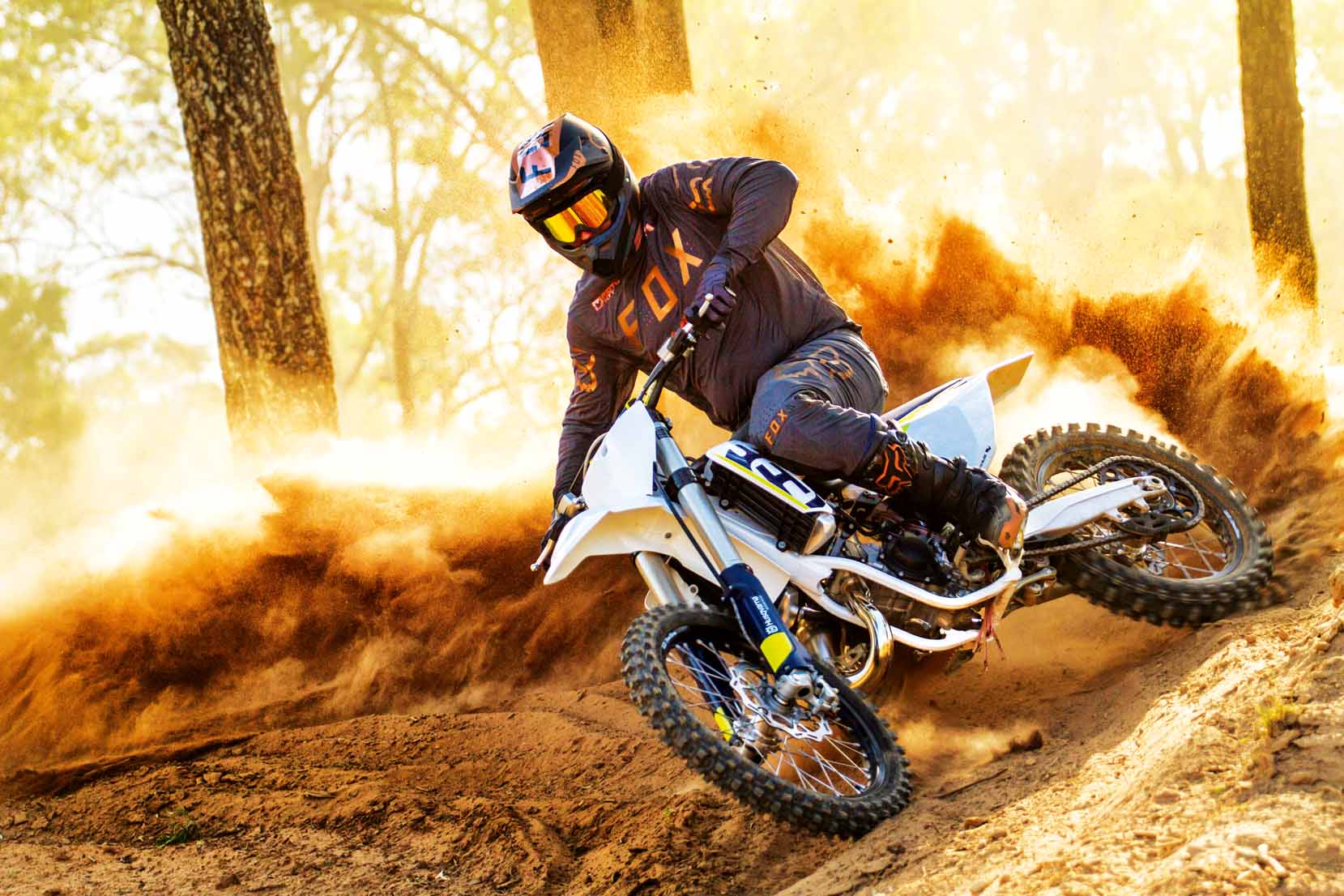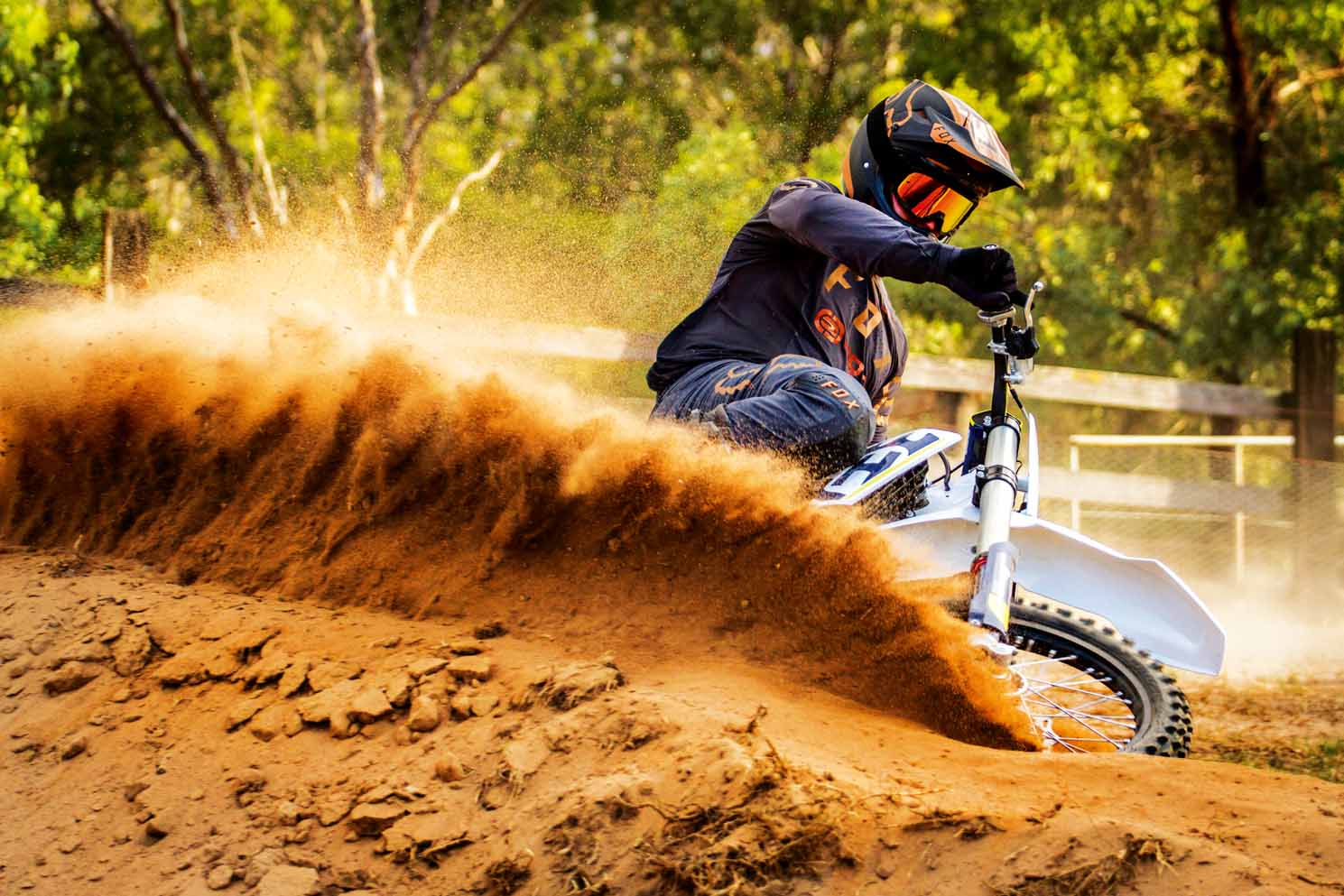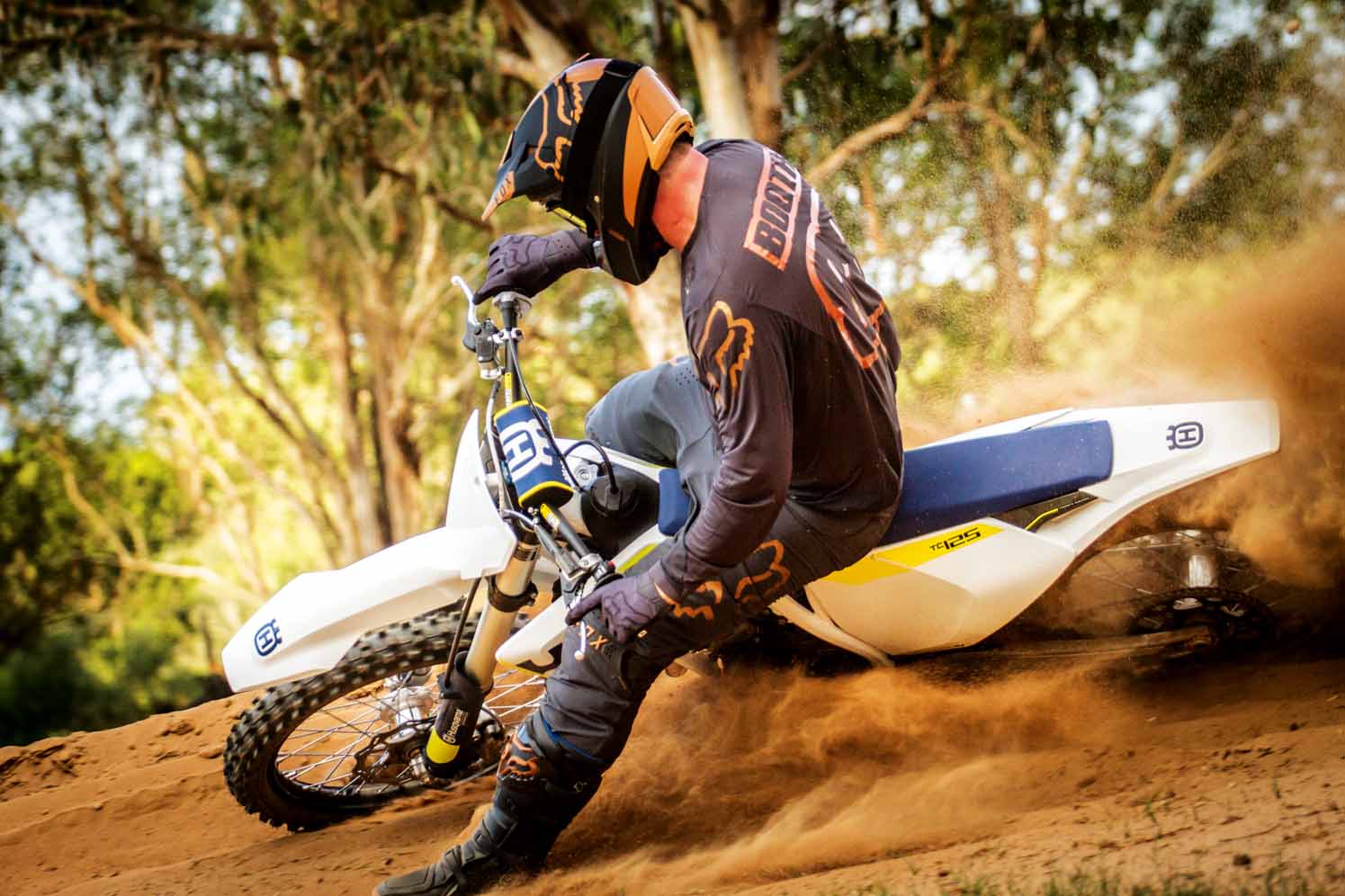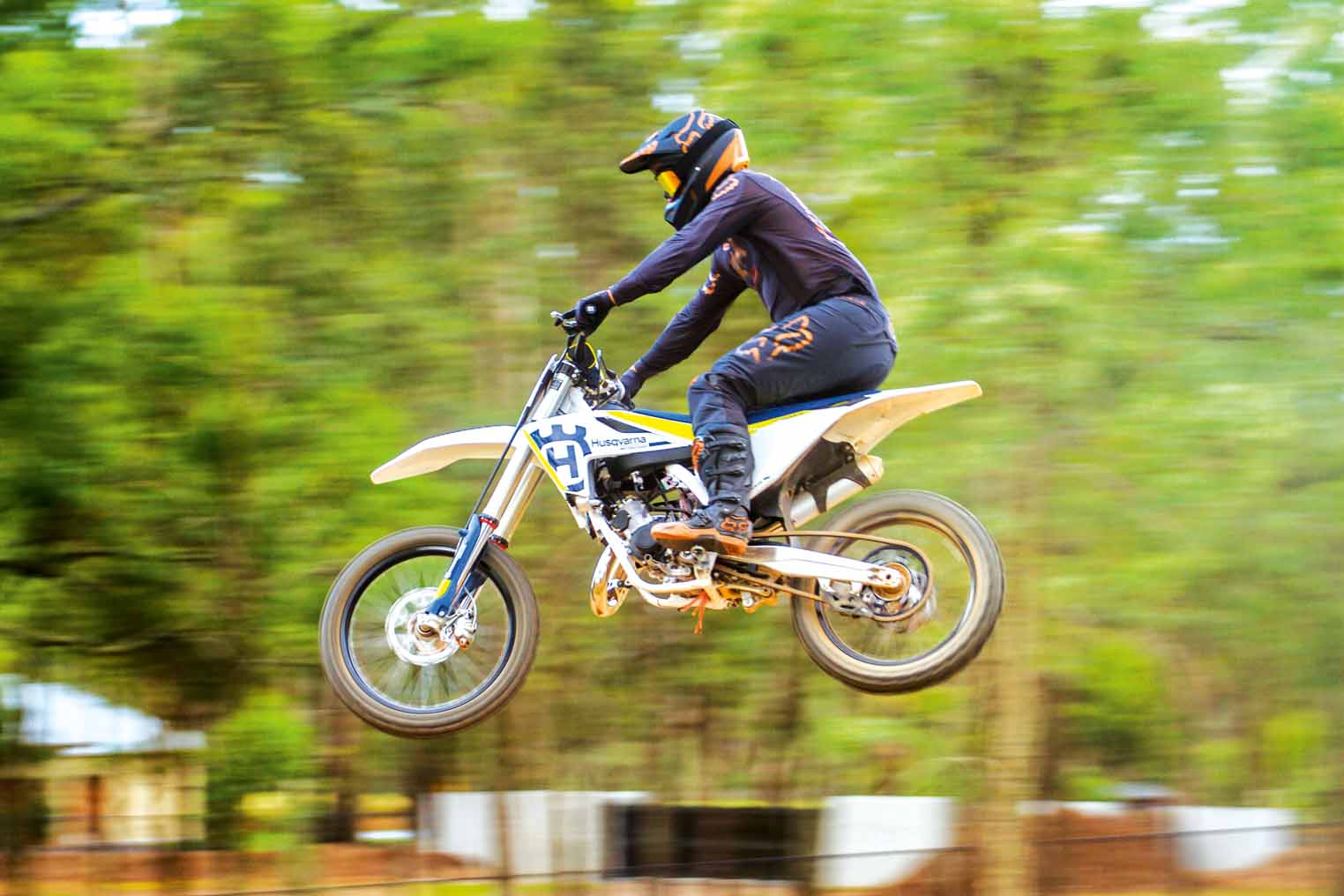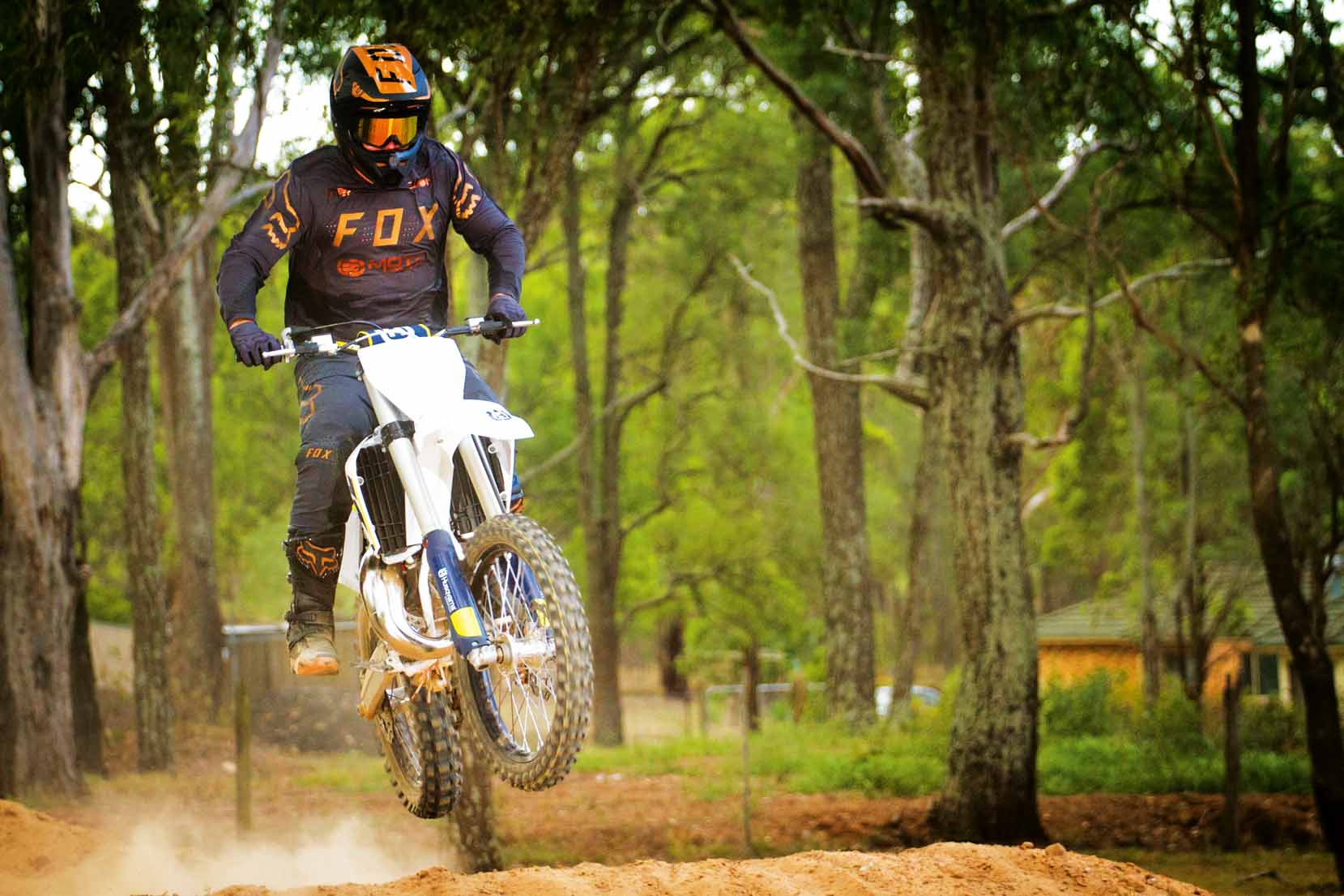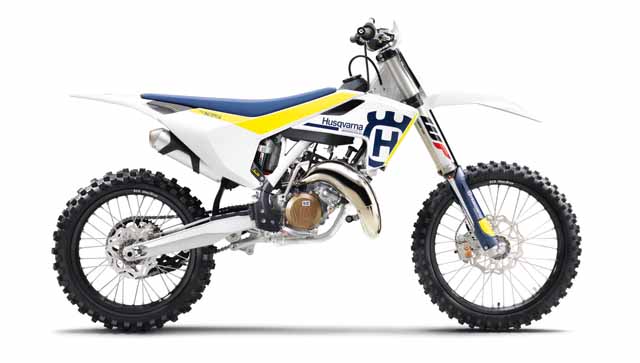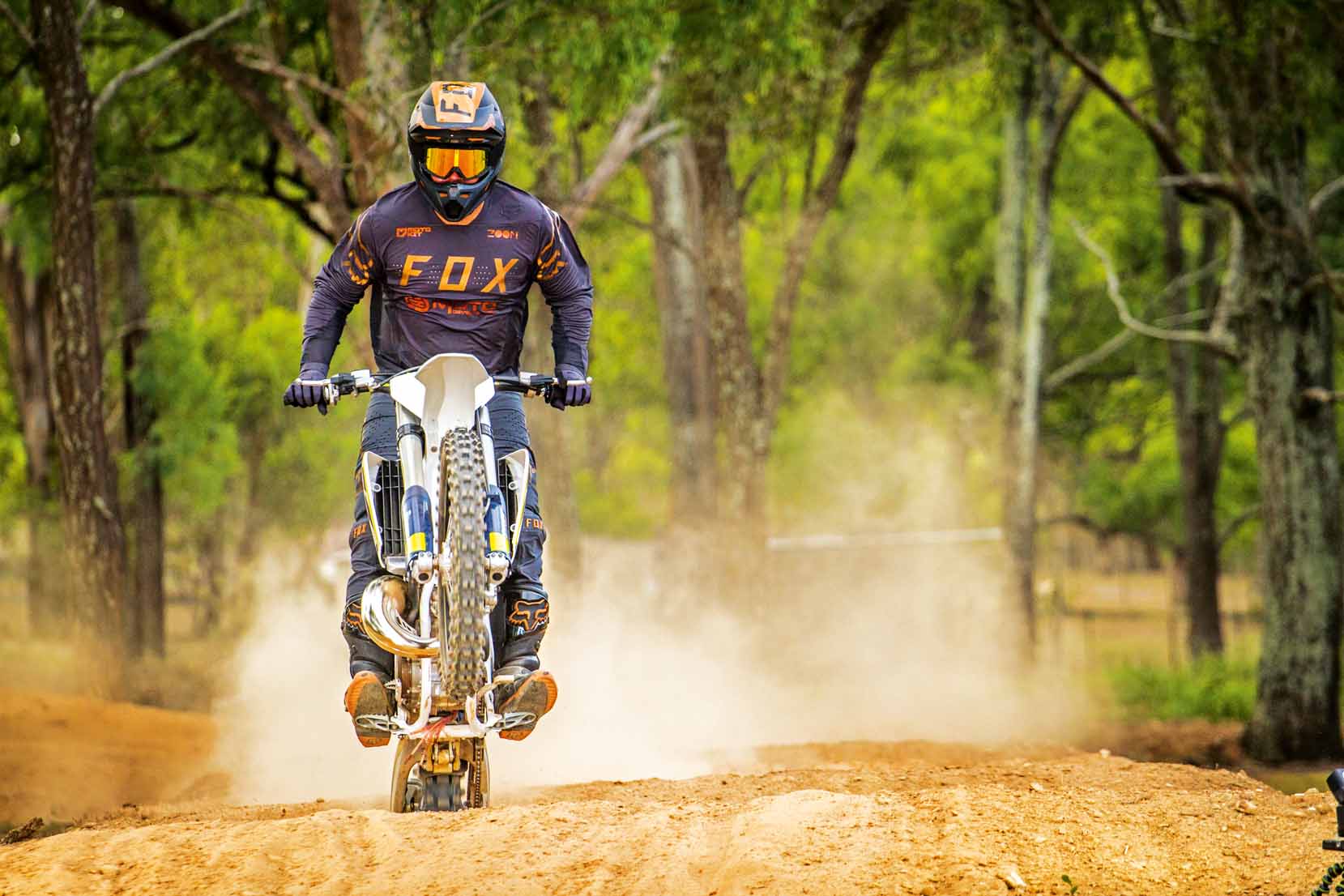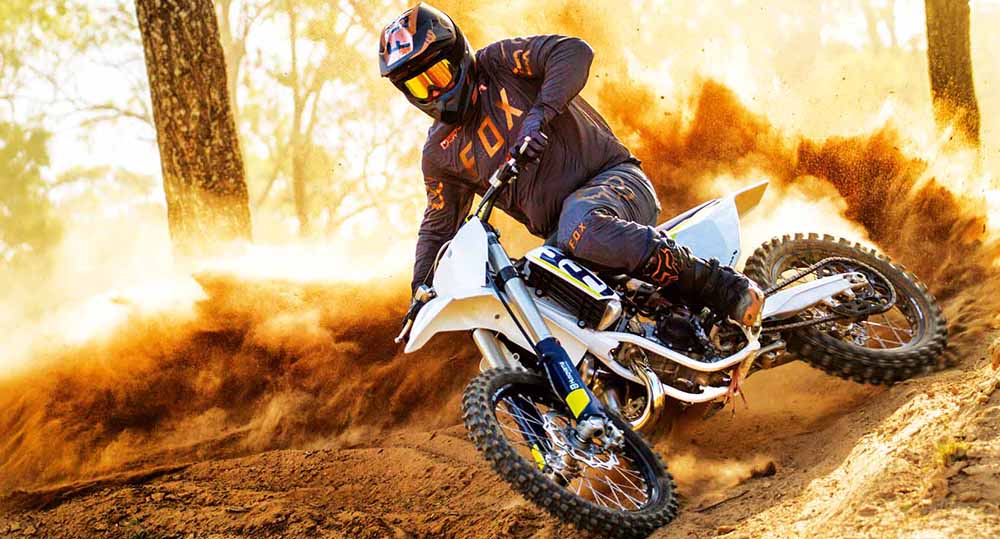
The Husky 125 received a major overhaul in 2016 so no big changes were expected for this year. It didn’t go unaltered, though — a few updates and the all-new WP AER fork just sweetened the package that little bit more
Story Shane Booth| Photography Matt Bernard
The Husqvarna TC 125 and its orange cousin are the only two 125cc motocross bikes to have had any updates in recent times. Only last year did the both of them receive a complete overhaul, something relatively unheard of for two-strokes these days.
So, for 2017 the Husky still benefits from some Austrian updates, the most valuable being the addition of the all-new WP 48mm AER fork. There are several other new bits but I’ll get to those later. The game changer here is the fork and with that you have yourself a 125cc two-stroke that’s pretty tough to fault.
WHAT’S NEW?
As I mentioned, the WP air fork is a welcome addition. The rear brake pedal is 10mm longer, the carby is now a 38mm Mikuni unit, the top handlebar mount is now one piece and the bike gets some ODi lock-on grips. It’s a relatively short list of updates for a bike that does feel improved over the previous model, again thanks mostly to the new forks.
THE SUSPENSION
The addition of the WP 48mm AER forks has done wonders for the Husky range of motocross bikes and the 125 is no exception. The forks seem to work spot on with the steel-framed Huskys and their action is plush and confidence inspiring. When you get the air pressure correct for yourself you’ll find you can back off the compression a little to increase the plushness without sacrificing bottoming resistance too much. I found the forks to work well at 130psi with the compression at 16 clicks out.
I love the way this bike turns and handles although more than anything it’s probably due to the fact it’s a 125 and it’s so light and feels so nimble. 125s don’t have much mass turning underneath you and you forget it until you ride one again. The ease of adjustment that comes with air forks is great, too, especially when you have only one chamber to monitor.
Be aware though that you should check the fork air pressure before every moto as they are sensitive to temperature changes. If you check it early in the morning and you have a temperature increase of 10 or so degrees, for example, you’ll see quite a change. It’s not hard to do; just remember to stay on it.
The rear shock matches up well and the bike feels balanced. I wound some compression into it so that it just held up a little and matched up with the increased fork air pressure better but in the long run I’d go up a spring rate. Overall, the package with the new fork works very well and wipes away the big black mark the 2016 models had with the 4CS fork.
THE ENGINE
The biggest change here is the new Mikuni carburetor and the reasoning behind the change is mostly due to the fact that Husqvarna believes it’s easier to get a setting and will less likely to need rejetting if a cloud blows over. Our test bike had already been jetted with a spec from Husqvarna Australia. This is what was in there: 44–74 needle with the clip in the second position, a 470 main jet and a 42.5 pilot — a slightly leaner overall setting that seemed to work very well with just pump fuel.
The bike was crisp and responsive. This new-generation 125cc engine is most impressive in that the power actually has some broadness to it — for a 125, anyway. Its strength is in the midrange to top end but it’s no slouch off the bottom, either. From what I’ve heard, if you open up the airbox slightly with some additional venting the bottom end comes to life a little more.
Though the standard gearing felt fine to me, if I were racing this bike I’d be interested to try some other settings. Maybe an additional tooth or two on the rear sprocket would have you almost eliminate the use of first and second gear other than for the tightest of turns — not a bad thing on a 125. The power you have to work with would make for some interesting testing.
EURO COMPONENTS
There’s one thing you can’t argue about in the current range of Husqvarnas and that’s the level of componentry. The Magura hydraulic clutch gives great feel and is self-adjusting, so no need to wind out free play if you’re riding the clutch a little mid moto. The Brembo brakes are second to none and have always been a highlight of the European bikes. The addition of the ODi lock-on grips is a nice touch; the compound is comfortable and soft and they are a premium product that makes changing grips an easy task — albeit once you have a #15 Torx tool in your toolbox.
LIGHT & COMFORTABLE
Gone are the days of the full-on Euro bike feel — the TC 125 is a comfortable bike to sit on and everything feels like it’s in a good place. The Huskys’ seat has some serious traction to it; it’s an aggressive, functional design but by far the most aggressive of all manufacturers. Not a bad thing, but if you’re doing a lot of riding your backside will let you know about it for a few days after. Another great 125 trait is how light it feels. It’s just a refreshing change when you ride one; you can really just place the bike where you want when you want. It really is a lot of fun.
THE WRAP
I just wish I was racing 125s again. This would have been such a fun bike to race on a supercross track — and in motocross, for that matter. I really hope other manufacturers realise the value of 125cc bikes in motocross and follow suit with Husqvarna and KTM and pour some development into this class. There’s no doubt this bike, along with its orange brother, is the pick of the bunch in the 125cc class and with the new fork it’s tough to fault in any major way. If I’m racing a 125 in 2017 I’d like it to be white or orange, that’s for sure.
2017 HUSQVARNA TC 125 SPECS
Displacement: 124.8 cm³
Bore: 54mm
Stroke: 54.5mm
Starter: Kickstarter
Transmission: 6-speed
Secondary gear ratio: 13:50
Clutch: Magura hydraulic
Frame: Chromoly steel central-tube frame
Front suspension: WP-USD, AER 48, Ø48mm
Rear suspension: WP shock absorber with linkage
Suspension travel: front 310mm; rear 300mm
Front brake: Brembo twin-piston floating caliper, brake disc
Rear brake: Brembo single-piston floating caliper, brake disc
Front brake disc: 260mm
Rear brake disc: 220mm
Steering head angle: 63.9°
Wheelbase: 1485 ± 10mm
Ground clearance: 375mm
Seat height: 960mm
Tank capacity: 7L (approx)
Weight without fuel: 87.4kg

